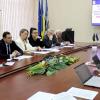Feed aggregator
The advent of recyclable materials for PCBs

Conventional PCB manufacturing—which is wasteful, energy intensive, and harmful to the environment—increasingly calls for electronics recycling to reduce material waste and energy requirements through less material production.

Figure 1 The conventional PCB world is ripe with recycling opportunities. Source: IDTechEx
IDTechEx’s new report, “Sustainable Electronics and Semiconductor Manufacturing 2025-2035: Players, Markets, Forecasts,” outlines new recyclable materials for PCBs and provides updates on their full-scale commercial readiness. Below is a sneak peek at these recyclable and biodegradable materials and how they facilitate sustainability in electronics manufacturing.
- New PCB substrates
While FR4, a glass-reinforced epoxy resin laminate, is a substrate of choice for PCBs due to being lightweight, strong, and cheap, it’s non-recyclable and can contain toxic halogenated flame retardants. That calls for alternative substrates that are biodegradable or recyclable.
Jiva’s Soluboard, a biodegradable substrate made from the natural fiber flax and jute, is emerging as a promising new material as it dissolves in 90°C water. That facilitates component recycling and precious metal recovery at the product’s end of life. Companies like Infineon, Jaguar, and Microsoft are currently testing if this new material can combat rising electronics waste levels.

Figure 2 Soluboard is a fully recyclable and biodegradable PCB substrate. Source: Jiva Materials
- Polylactic acid in flexible PCBs
Conventional flexible PCBs, built around plastic polyimide, are also ripe for alternative materials. Polylactic acid, currently in the prototype-scale validation phase, emerges as a sustainable material that can be sourced from organic industrial waste and is also biodegradable.
Polylactic acid can withstand temperatures of up to 140°C, which is lower than that of polyimide and FR4. However, it’s compatible with manufacturing processes such as silver ink sintering. Companies and research institutes like VTT are now demonstrating the potential of polylactic acid in flexible PCBs.
- Recycled tin
Around 180,000 tonnes of primary tin are used in electronics globally. It’s primarily sourced from mines in China, Indonesia and Myanmar and is causing significant environmental damage. Enter recycled tin, which is produced by smelting waste metal and metal oxide. It boasts the same quality as primary tin, which is confirmed by X-ray diffraction.
However, merely 30% of tin is currently recycled worldwide, so there is a greater need for regulatory drivers to encourage increased metal recycling. One example is Germany’s National Circular Economy Strategy (NKWS) unveiled in 2024, aiming to half per capita raw material consumption by 2045.

Figure 3 A boost in recycled tin relies on a strong regulatory push. Source: Mayerhofer Electronik
Mayerhofer Electronik was the first to demonstrate the use of recycled tin for soldering in its electronics manufacturing processes. Now, Apple has committed to using secondary tin in all products by 2035.
- Regeneration systems to minimize copper waste
It’s a widely known fact that copper is used wastefully in PCBs. This is how it happens: a flat sheet of copper is applied to the substrate before holes are drilled. Inevitably, a circuit pattern produced by etching away the excess copper requires large volumes of chemical etchants like ferric (III) chloride and cupric (II) chloride. As a result, around 70% of the copper initially applied to the board is often removed.
Here, additive manufacturing, in which copper is only applied where required, offers the solution in a method that requires no manufacturing switch. An etchant regeneration system recovers both copper etched from the laminate and etchant chemicals. The recycled copper can serve as an additional revenue stream for the electronics manufacturer.
Related Content
- The problem with recycling
- PCB materials: Recycle, reuse, dispose?
- Trends and Challenges in PCB Manufacturing
- Process for recycling turns up components ready for reuse
The post The advent of recyclable materials for PCBs appeared first on EDN.
Гідні умови праці та кар'єрне зростання пропонує НАЕК "Енергоатом"
Топменеджери атомної енергетичної галузі в середині березня завітали до НН ІАТЕ, відвідали лабораторії та науково-дослідний центр, ознайомилися з інноваційними підходами до навчання, зустрілися зі студентами, науковими й науково-педагогічними працівниками Інституту та обговорили важливість підготовки висококваліфікованих спеціалістів для енергетичної галузі. Фахівці з персоналу АТ НАЕК "Енергоатом" відзначили високий рівень знань і затребуваність випускників КПІ ім. Ігоря Сікорського.
Утвердження гендерної рівності: крок за кроком
Газета "Київський політехнік" вже розповідала про основні засади, покладені в основу Плану дій з імплементації принципів гендерної рівності в практику діяльності КПІ, затвердженого наказом ректора від 3 жовтня 2024 року. Наприкінці березня відбулося розширене засідання робочої групи з питань гендерної рівності КПІ ім. Ігоря Сікорського, участь у якому окрім її членів взяли представники низки підрозділів і ректор університету Анатолій Мельниченко.
Звіт голови Профспілкового комітету КПІ ім.Ігоря Сікорського Юрія Веремійчука про виконання Колективного договору за період з квітня 2024 до квітня 2025 р.
Шановні делегати Конференції трудового колективу, працівники та здобувачі вищої освіти університету, запрошені!
Novel Crystal Technology boosts gallium oxide MOSFET power figure of merit record by 3.2-fold
Озеленення в КПІ ім. Ігоря Сікорського триває
🌳До нашого університету завітали колеги з Національного університету біоресурсів і природокористування України (НУБіП) у складі ректора, проректорів і голови Вченої ради для того, щоб висадити клени, липи і туї у парку Нескорених біля 28-го корпусу Київської політехніки.







